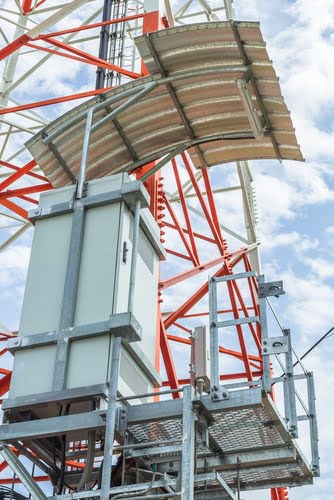8 Thermal Management Tips for Outside Plant Applications

The increased power density of telecom equipment along with the vulnerability of some components to excessive temperature variation means the thermal management of outside plant equipment has become crucial. Outside plant cabinets are exposed to widely fluctuating ambient temperatures, yet their internal temperatures must be maintained within the limits specified by GR-3108-CORE. Here are eight tips that will help optimize the thermal management of outside plant cabinets.
1. Calculate the Total Heat Load
The first step is to establish the total heat load within the enclosure. Information is readily available from manufacturers, but care must be taken when calculating the heat generated by power supplies, rectifiers and inverters; this is related to the operating current and design of such equipment. Additionally, allow for the significant impact that solar radiation may have on the enclosure.
2. Establish the Ambient Temperature Variation
Using historical climate data, establish the maximum and minimum ambient temperatures that can be expected at the site where the cabinet will be installed. Don’t use average maximum temperatures. Instead, obtain the actual maximum and minimum temperatures that have been recorded to ensure that the cooling design complies with specifications.
3. Establish Desired Cabinet Temperature
The GR-3108-CORE Class 1 specification allows for a range of internal temperatures from 41 °F to 104 °F, but this range is wide and does not necessarily suit all telecom equipment. For example, the temperature of standby batteries should be maintained within a relatively narrow range of between 68 °F and 77 °F or their service life and capacity will be negatively affected. In addition, the reliability of electronic equipment is affected by high operating temperatures. A good rule of thumb is to choose a temperature somewhere between 77 °F and 95 °F, and locate the batteries at the bottom of the cabinet where the temperature is lower.
4. Calculate Required Cooling Capacity
Once the heat load, ambient temperature and the optimum internal temperature have been established, the cabinet cooling capacity requirement can be calculated. To do this, the size of the cabinet, materials of construction and surface finish must be noted. Although the calculation can be manually performed, it is faster and more accurate to use an online cooling capacity calculator.
5. Active or Passive Cooling
The primary methods of cooling telecom enclosures include natural ventilation, fan assisted ventilation, air to air heat exchangers and enclosure air conditioning. Ventilation entails drawing ambient air into the cabinet either by means of convection or with fans and using the relatively cooler air to extract heat from the enclosure. A limitation of this method of cooling is that the enclosure temperature will always be several degrees higher than the ambient air temperature so it is not suitable for hot environments.
An alternative that has several benefits is closed loop cooling. This entails using a sealed
enclosure fitted with an external cooler. Two alternatives exist, the lower cost of which is an air to air heat exchanger. This utilizes innovative heat pipe technology to remove the heat and is very efficient and economical. As with the ventilated solutions, it is limited to cooler locations as the process relies on the temperature difference between the cabinet and the environment to remove heat.
The second alternative is to use an enclosure air conditioner. This is the only solution that can maintain a cabinet temperature that is lower than the ambient air temperature and is the best choice for applications subject to high heat loads.
6. Sealed or Ventilated Enclosure
If a ventilated cabinet is used, contaminants such as dirt, dust, salt and any pollutants that may be present will be drawn into the enclosure. Although filters reduce the amount of contamination, they are not 100 percent effective. The alternative is a sealed enclosure and for outside cabinets that are subject to rain, snow and ice it is suggested that a NEMA Type 4 or 4X enclosure is the best solution
7. Cooling Power Supply
Many telecom cabinets are located in places where it’s necessary to provide standby batteries to ensure uninterrupted service. In such circumstances, it’s more efficient to use the batteries to power the enclosure cooling solution and where possible DC powered heat exchangers or air conditioners DC powered enclosure coolers should be selected.
8. Enclosure Heating
In order to ensure that the minimum enclosure temperature does not fall below 41 °F, it may be necessary to install an enclosure heater or an enclosure air conditioner with a heater option. This will also prevent condensation inside the cabinet caused when the ambient temperature falls below the dew point.
Speak To the Experts
Thermal Edge manufactures a full range of enclosure cooling solutions and has recently launched a range of DC powered air conditioners designed specifically to meet the needs of the telecom industry. For further information, please contact our technical sales team who can advise on the best outside plant cooling solution.

